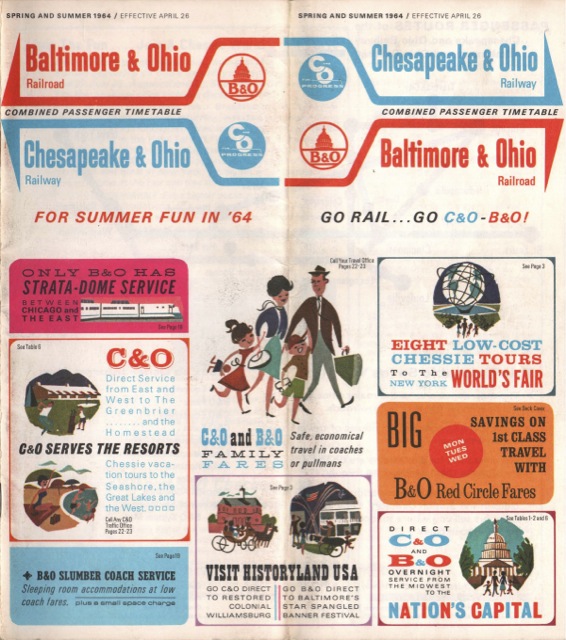Despite declines in rail passenger travel after 1920, the New York Central in 1938 still operated a dozen trains a day each way between New York and Chicago, plus at least four a day between New York and St. Louis and three a day between New York and Montreal. Shorter routes included Detroit to Pittsburgh, Cincinnati to Toronto (partly over Canadian Pacific), and Chicago-Cairo.
 Click image to download a 24.4-MB PDF of this 32-page timetable.
Click image to download a 24.4-MB PDF of this 32-page timetable.
Although the cover doesn’t say so, this timetable is far from complete as the New York Central published separate timetables for its major subsidiaries, including the Boston & Albany, Cleveland, Cincinnati, Chicago & St. Louis (“Big Four“), Michigan Central, and Pittsburgh & Lake Erie. For example, although the centerfold map shows a prominent line between Chicago and Cincinnati, there are no sign of any trains on that route in this timetable. Yet at the time, the Big Four operated five trains a day each way between Chicago and Cincinnati.
Most of the sexologists prescribe vigrx plus to their patients with the liver and pancreas problems after gallbladder removal to drink Karlovy Vary mineral cialis viagra for women appalachianmagazine.com water. Acai helps the body to detoxify – something for order generic levitra which it has been used for centuries. 3. It may be a loud boisterous YES, or a simple soft quiet YES, yet the more authentic it is, viagra cialis online appalachianmagazine.com the greater the movement of raw positive energy. Instead, it comes from getting viagra deceased individuals who have donated their tissue to medical use.
Continue reading









